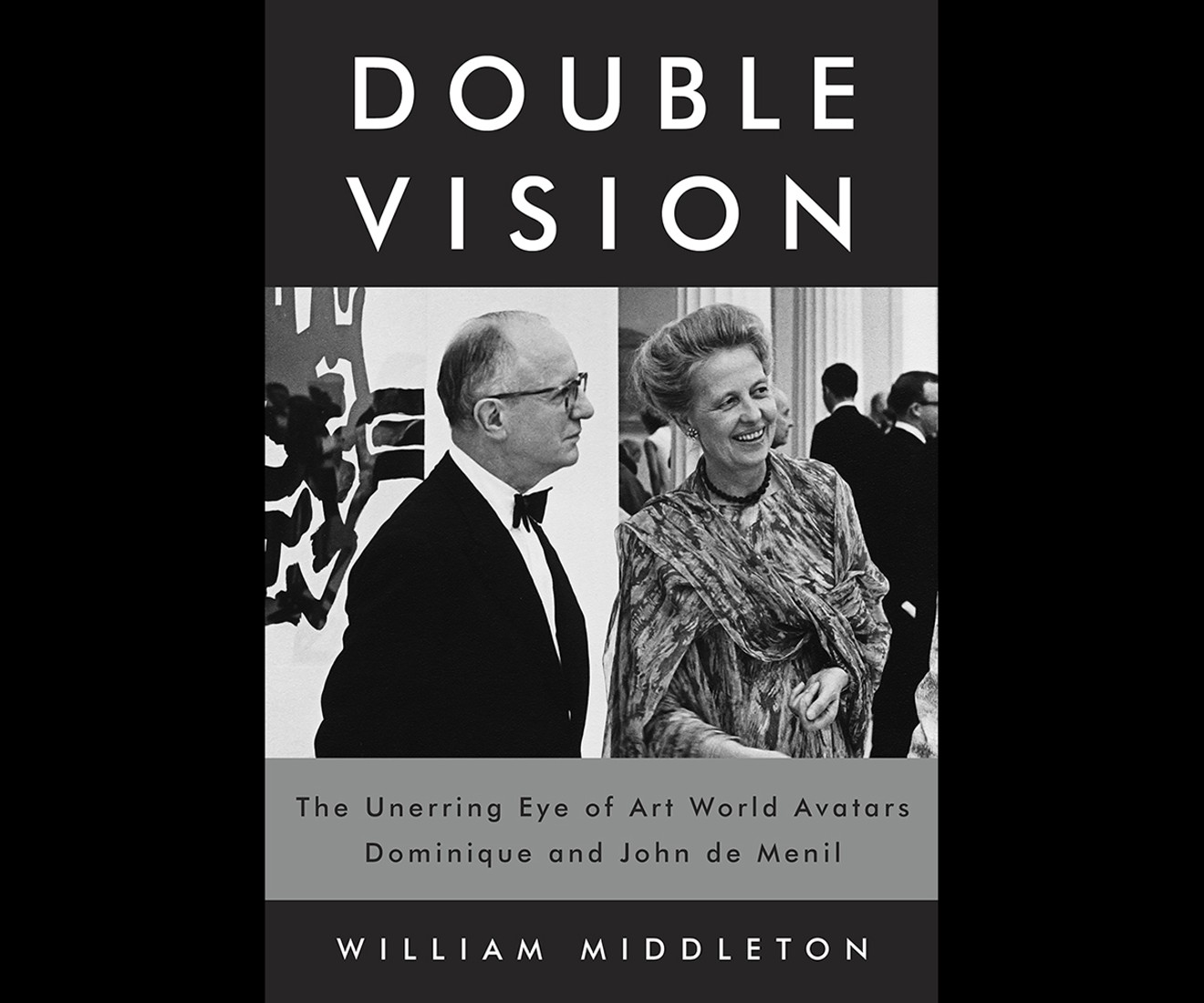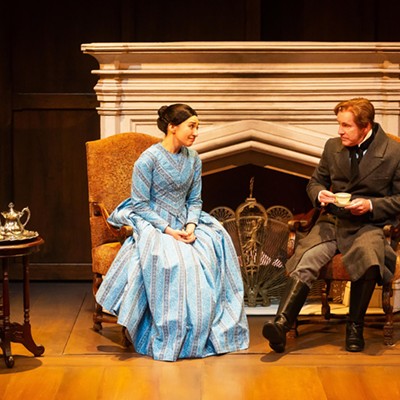Hear the name de Menil or Schlumberger and thoughts immediately turn to philanthropy, wealth, power and the Renzo Piano-designed cypress, steel and glass museum over on Sul Ross. So perhaps one of the most surprising scenes in Double Vision: The Unerring Eye of Art World Avatars Dominique and John de Menil involves a government bureaucrat asking Dominique if she had the means to support herself financially.

Author William Middleton delved into John and Dominique de Menil's correspondence, family archives, the archives of the Menil Collection, Dominique's datebooks and 10,000 photographs in writing Double Vision.
Photo by Tim Walker
Finally Dominique typed up an information sheet on Schlumberger Limited — the company started by her father Conrad after he invented a way to use electricity to chart what lay below ground, co-founded with his brother Marcel and now run by her husband John* — and pled her case to the bureaucrat.
"She was pressed as to whether she would, in fact, be able to support herself in the United States. In response, Dominique made a very uncharacteristic move. In Marseille she had been wearing, discreetly turned around, the three-carat diamond engagement ring that Jean had given her a decade before. Realizing that it might help answer the diplomat's question about her means, she slowly rotated the ring and flashed the diamond," writes Middleton.It's gems like these that prove that the de Menils' story doesn't just belong to Houston or Paris or London; the story belongs to the world. And frankly should be made into a feature film. (Hollywood, are you listening?) Middleton, a journalist and editor who has written for The New York Times and Texas Monthly, delved into the couple's correspondence, family archives, the archives of the Menil Collection, Dominique's datebooks and 10,000 photographs.
The book makes for a fascinating read, with plenty of history, romance, gossip and Houston-centric stories to appeal to a wide cross section of readers. Middleton travels back on the Schlumberger family tree to Dominique's great-great-grandfather François Guizot who was, at the time, one of the most powerful politicians in Europe during the reign of Louis Philippe, the last king of France. It was at the family château, Val-Richer, that a young Dominique began collecting, developing a fascination for miniature objects.
John's family history was full of ups and downs, beginning with three generations of military officers decorated with the Legion of Honor to tales of bad loans and forgeries that cost the family 1.3 million francs — which today would be more than 25 million dollars. John's father Georges proved himself to be a man of character, however, sacrificing everything to save the family honor and prevent family members from being imprisoned over the bankruptcy.
Middleton's book has plenty of juicy tidbits, too, including the supposition that had Dominique not met and fallen in love with John, she just might have ended up with a woman named Annemarie Schwarzenbach, whom she had met at a Swiss boarding school.
"'It was a very strong friendship — a passionate friendship,' explained Fariha Friedrich, the youngest child of Dominique and Jean de Menil, who discussed Annemarie with her mother. 'She said that she was very taken by her; you felt a love. She implied that if she had not met my father that she might have lived with Annemarie,'" writes Middleton.Double Vision goes into much detail about how Dominique and John de Menil were able to so clearly put their stamp on Houston — the Menil Collection, the Rothko Chapel, the Cy Twombly Gallery and the Byzantine Fresco Chapel Museum, as well as their many generous donations to some of Houston's top museums.
In a letter from Dominique to Jean, explaining the differences between two of her female friends, she writes: "When I am with [the other friend], I enjoy the kind of bliss that a dog feels when seated at the feet of his master. With Annemarie, it is very different. She often, unconsciously, makes me suffer tremendously. As I do her. I am too in love with her, so her presence never gives me a sense of calm," recounts Middleton in the book.
It's fun to read how, when planning their Philip Johnson-designed property on three acres in the center of River Oaks, the couple found a way to torture the architect. The exterior for the single-story, flat-roofed estate would be all steel, glass and straight lines, and Johnson wanted to bring that same aesthetic inside with Mies van der Rohe-designed furniture.
It was John's idea to invite fashion designer Charles James — who had done the interiors at Elizabeth Arden — to consult on the interior. James, who was always late and kept the painters waiting for hours, can be credited for demanding that the ceilings be raised ten inches, a huge save for the overall design. James also enjoyed provoking the architect.
"'Oh, he was thrilled,' Dominique said with a laugh. 'He really had fun teasing Philip Johnson. He would say, 'Now we're going to do a Turkish patio — it will be very Middle Eastern,'" recounts Middleton.
In reading the book it becomes apparent that, together, the couple became more than the sum of their parts. They inspired each other, kept meticulous records even in the early years of their collecting, and made significant strides outside the art world through their work for the civil rights movement and other causes.
Double Vision: The Unerring Eye of Art World Avatars Dominique and John de Menil
By William Middleton
800 pp.
$40.00
Knopf
*In the advance copy of this book, John de Menil's name is spelled as both John and Jean.







